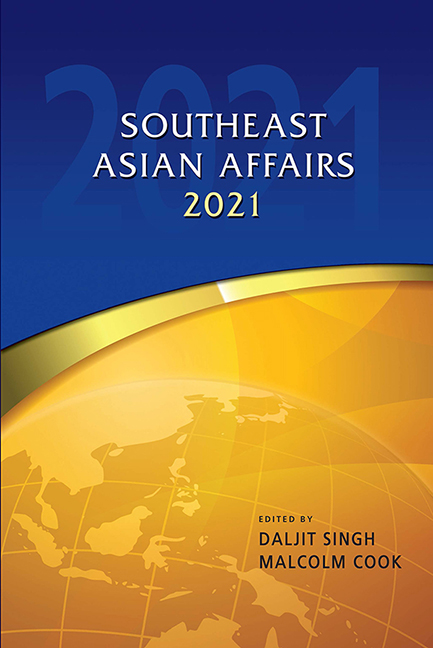Vietnam’s Economic Prospects in the Wake of the US-China Trade Conflict and COVID-19
Published online by Cambridge University Press: 09 October 2021
Summary
On the last day of 2020, all roads leading out of Hanoi were congested. My family and I were also stuck in the middle of a sea of cars for hours until it was completely dark. At that time, I thought the occasion symbolized the progress of the Vietnamese economy: prosperity had grown steadily over the past few decades and its dynamism was not interrupted even in 2020. Vietnam remains a rare positive exception in the year of “twin storms”—the tense economic confrontation between the United States and China and the uncontrolled COVID-19 pandemic shaking both global health and the economy. The country has tried over most of 2020 to keep its domestic affairs relatively stable and the daily lives of her citizens uninterrupted.
Indeed, in 2020 Vietnam's economic growth showed a significant drop in the second quarter (down 0.36 per cent year-on-year—the lowest in a decade) as a consequence of the negative shock from the late January outbreak of COVID-19, which caused the whole country to be locked down for the first two weeks in April. After a few weeks, however, the pandemic was effectively controlled, and though all borders remained closed, the domestic economy recovered to show a 2.62 per cent growth in the third quarter before reaching 4.48 per cent (year-on-year) in the fourth quarter (see Figure 1). Overall, Vietnam's GDP in 2020 was reported to have increased by 2.91 per cent, thus recording a positive growth rate while most other economies in the world were in contraction. The country's annual inflation has also been continuously maintained at a rate as low as under 4 per cent for the past seven years, indicating that macroeconomic stability has been skilfully and effectively achieved for the longest period since Doi Moi (in the early 1990s).
This chapter begins with an overview of the progress of the Vietnamese economy in 2020. It then briefly assesses the impact of the US-China trade conflict on the economic and trade development of Vietnam. The effects of the COVID-19 pandemic are then examined to understand how Vietnam was able to contain the virus outbreak for most of 2020. The chapter concludes with a discussion on the outlook for the Vietnamese economy in 2021.
- Type
- Chapter
- Information
- Southeast Asian Affairs 2021 , pp. 405 - 427Publisher: ISEAS–Yusof Ishak InstitutePrint publication year: 2021



